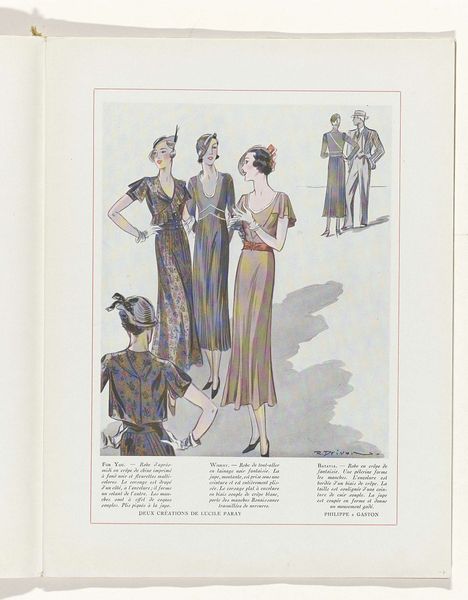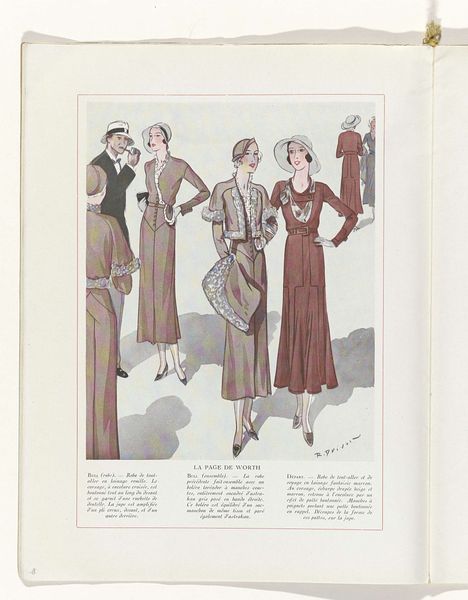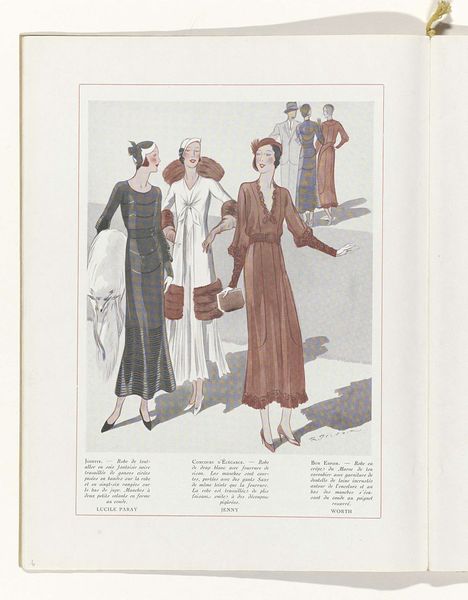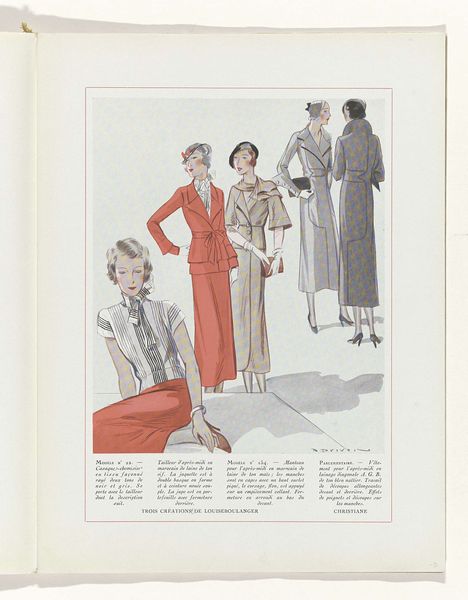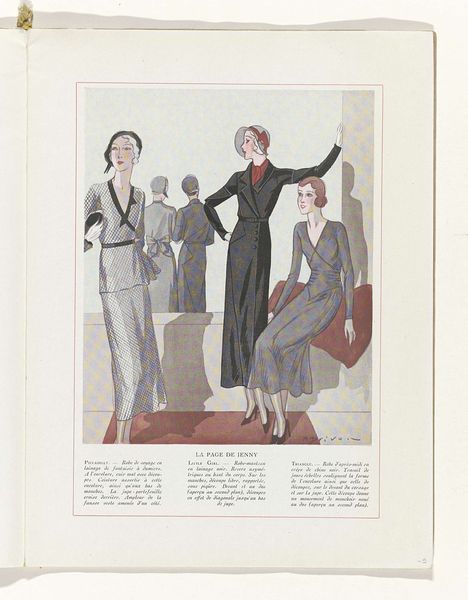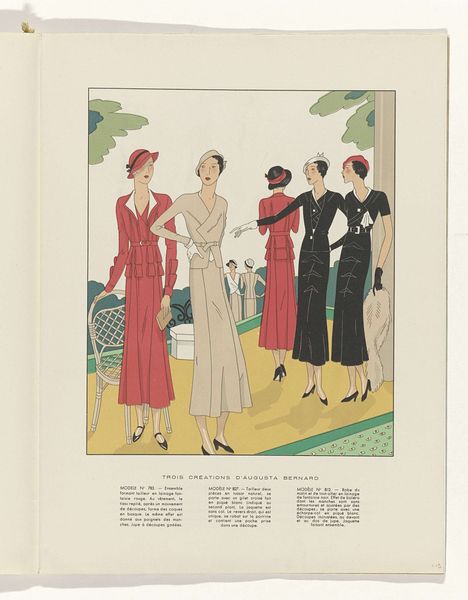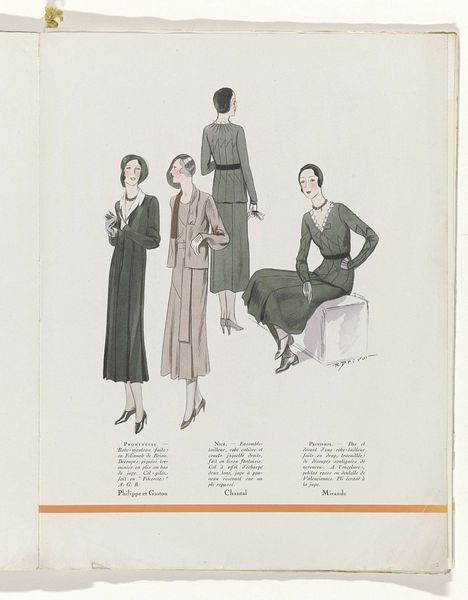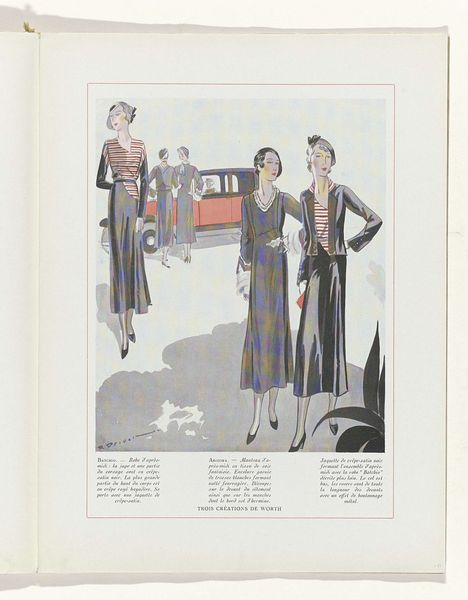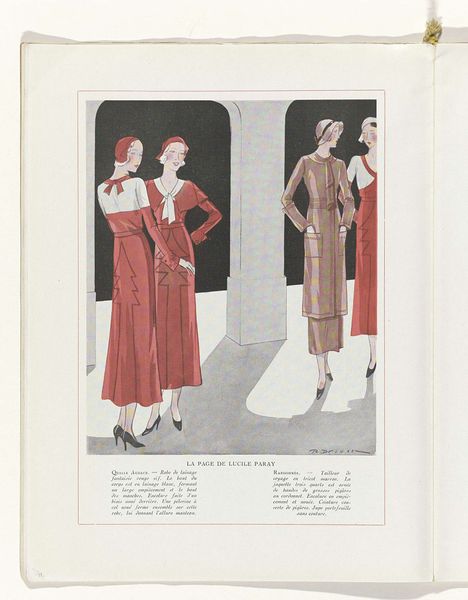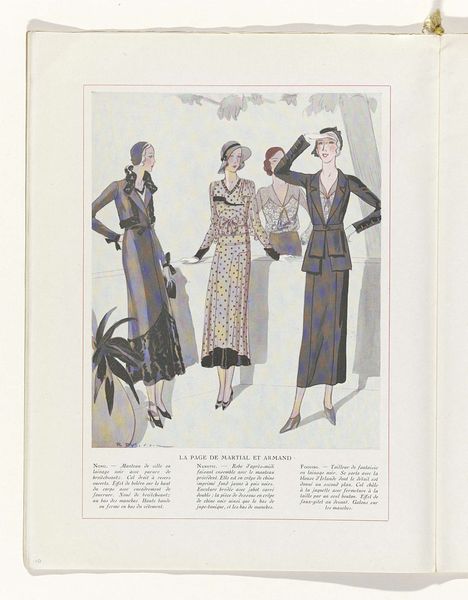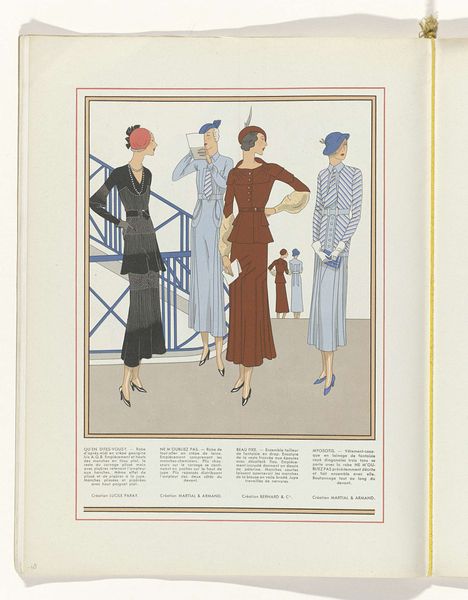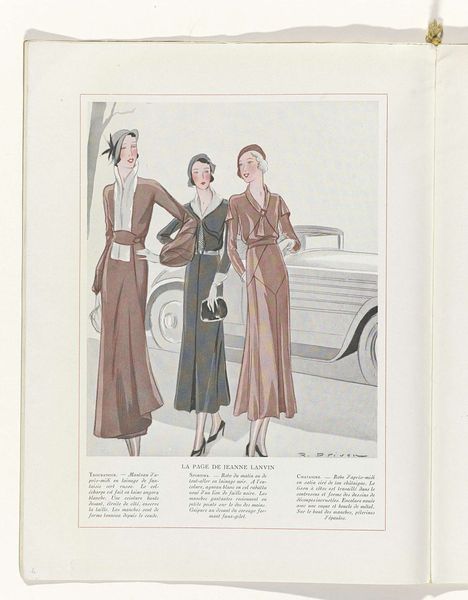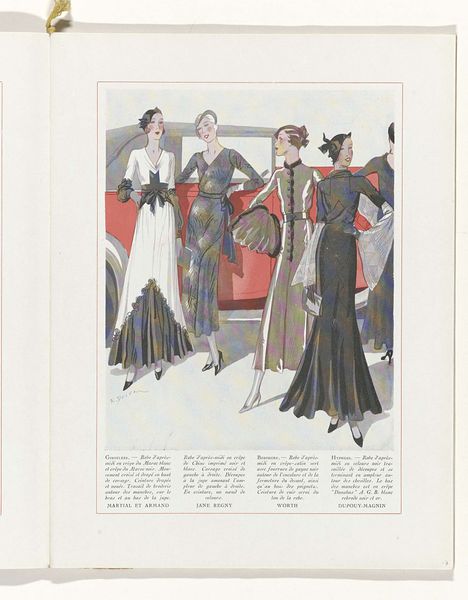
Art - Goût - Beauté, Feuillets de l' élégance féminine, Novembre 1931, No. 135, 12e Année, p. 8 1931
0:00
0:00
drawing, paper, ink
#
portrait
#
art-deco
#
drawing
#
traditional media
#
figuration
#
paper
#
ink
#
watercolour illustration
#
genre-painting
Dimensions: height 315 mm, width 240 mm
Copyright: Rijks Museum: Open Domain
Editor: This illustration, titled "Art - Goût - Beauté," is from a 1931 issue of "Feuillets de l'élégance féminine." Attributed to R. Drivon, it's rendered in ink and watercolour on paper, depicting several women in fashionable outfits. What strikes me is the emphasis on texture and the almost industrial precision of the lines, despite being a hand-rendered drawing. What do you make of it? Curator: The image is quite revealing. Look at the clear emphasis on the production and presentation of fashion. The materials used—the paper, the ink, the watercolour—are all part of a system designed to disseminate tastes and trends to a consuming public. Notice how each garment is presented not just as an object of desire, but as something achievable through purchase. Editor: So, you're seeing this less as art for art's sake and more as a carefully constructed advertisement? Curator: Precisely. It is the physical magazine page, the very means of its distribution and consumption, that holds significance. Who were the laborers involved in creating and printing these images? To what extent did this contribute to, or reflect, women’s changing roles and the rise of consumer culture in the early 20th century? Even the designers mentioned–Maggy Rouff, Mainbocher–became brands contributing to a global economic system. Editor: It’s fascinating to think about it that way. I was so focused on the Art Deco aesthetic that I missed the economic aspect. Curator: It’s easy to be seduced by the beauty, but by digging into the context of its creation, circulation, and consumption, we uncover a richer understanding of its place in history. Always question: who benefits, who labors, and what are the material conditions that make such images possible? Editor: I will certainly look at art from now on and consider labor, materials, and context much more, considering these as intrinsic parts of art analysis, not something added as an afterthought.
Comments
No comments
Be the first to comment and join the conversation on the ultimate creative platform.
